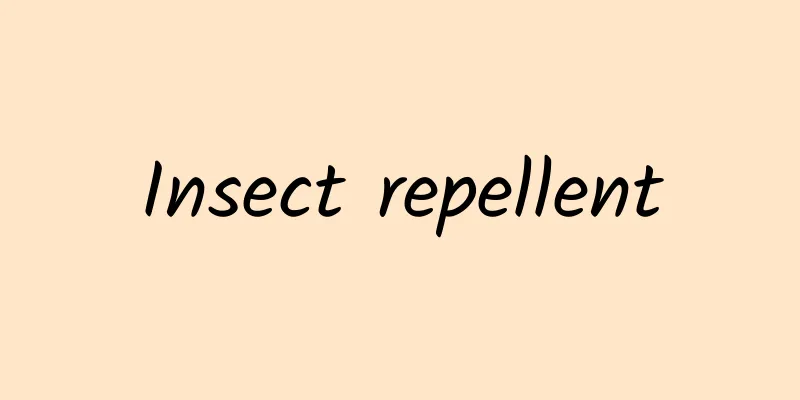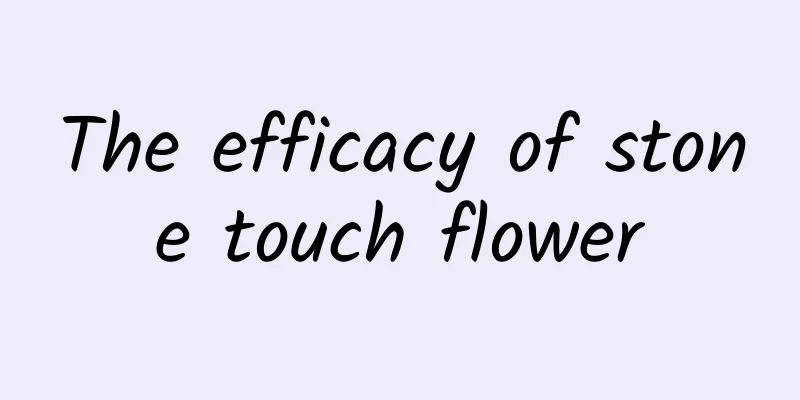Insect repellent

|
Can Cordyceps be placed in the bedroom? Cordyceps can be grown indoors. Because its leaf pores are large and dense, they release a scent that repels mosquitoes and can also freshen the air in the house. Moreover, it does not require too much light, and the ventilation requirements are not high. The natural environment in the room can fully meet its needs. But be aware that it is best not to keep it in the bedroom. Mosquito repellent vanilla, also known as mosquito repellent grass, is a woody evergreen plant belonging to the genus Geranium of the family Geranium. It was first created by scientists from Spain and the Netherlands using cell fusion technology to transfer the genes that produce citronellal from lemongrass into geranium to create a new type of plant. The plant releases the mosquito repellent substance citronellal under natural conditions to achieve the mosquito repellent effect and has a lemon scent, thus becoming famous. Mosquito repellent vanilla has a beautiful shape and fragrant smell. It has the functions of green ecological mosquito prevention, indoor air purification, fatigue relief, antibacterial and sterilization. The benefits of placing insecticide in the room 1. Anti-mosquito: Its leaf pores are large and dense, and will release fragrance, which can repel mosquitoes. 2. Fresh air: Its smell can not only repel mosquitoes, but also freshen the air. In addition, it can also release CO2, which can increase the oxygen content in the air and improve the air in the home. How to maintain insecticide in the room 1. Temperature: The temperature for raising it should be maintained between 10 and 25 degrees. If it exceeds this temperature range, it will stop releasing the smell and the purpose of insect removal will not be achieved. 2. Sunlight: It is not resistant to strong light, so avoid keeping it in sunny areas such as balconies. It should be placed in a semi-shaded area for maintenance. The amount of sunlight exposure is about three hours a day. 3. Watering: It does not require much water, so watering should be appropriate. Observe its condition before each watering. If there are signs such as drooping leaves and whitening of the soil surface, it means that watering is needed. When watering, just wet the soil thoroughly. 4. Fertilization: The nutrients in the soil cannot meet its requirements, so fertilizer is needed once a month. Only by taking into account its nutritional requirements can it be driven to release the smell that can repel insects. You can use homemade compost for fertilization. |
Recommend
The efficacy and function of beef lung
The traditional Chinese medicine cow lung is ofte...
The efficacy and function of the inverted umbrella
We know that there are many kinds of Chinese medi...
[Smart Farmers] Subvert the impression! This kind of "working" bees can also reproduce offspring
Recently, the Pollinator Reproduction and Pollina...
The efficacy and function of shrimp
Prawn is a traditional Chinese medicine. It has h...
The efficacy and function of wild bitter pear root
The root of wild bitter pear has attracted our at...
[Creative Cultivation Program] In a hundred years, will humans be unable to see a single star? Light pollution harms more than just astronomical observations
Author: Fan Zhou Why can we see few stars in the ...
3 tips for running the air conditioner to help you save hundreds of dollars in electricity bills per year
Review expert: Ji Hongzeng, PhD candidate in refr...
The "elegant" dinosaur with a long neck is the "last survivor" spanning two eras
Editor's note: In the long history of life on...
The efficacy and function of drinking tea made from the flower of the Chinese holly
Dendrobium officinale flowers are light green in ...
What are the taboos of Polygonum multiflorum tea
Polygonum multiflorum tea is different from the t...
An earthquake occurred in Langfang, Hebei Province in the early morning. Many areas in Beijing, Tianjin and Hebei felt the tremors! How to avoid danger safely?
The China Earthquake Networks Center officially d...
Traditional Chinese Medicine's Methods of Health Preservation and Anti-Aging
Each of us will age slowly over time, but we can ...
What are the medicinal values of Buddleja?
Perhaps for most people, Buddleja montana is a ve...
The efficacy and function of crucian carp gall grass
Crucian carp gallbladder is a common Chinese medi...
This museum actually "moved" a real tropical rain forest here!
The Cosmobox Science Museum in Barcelona opened t...









